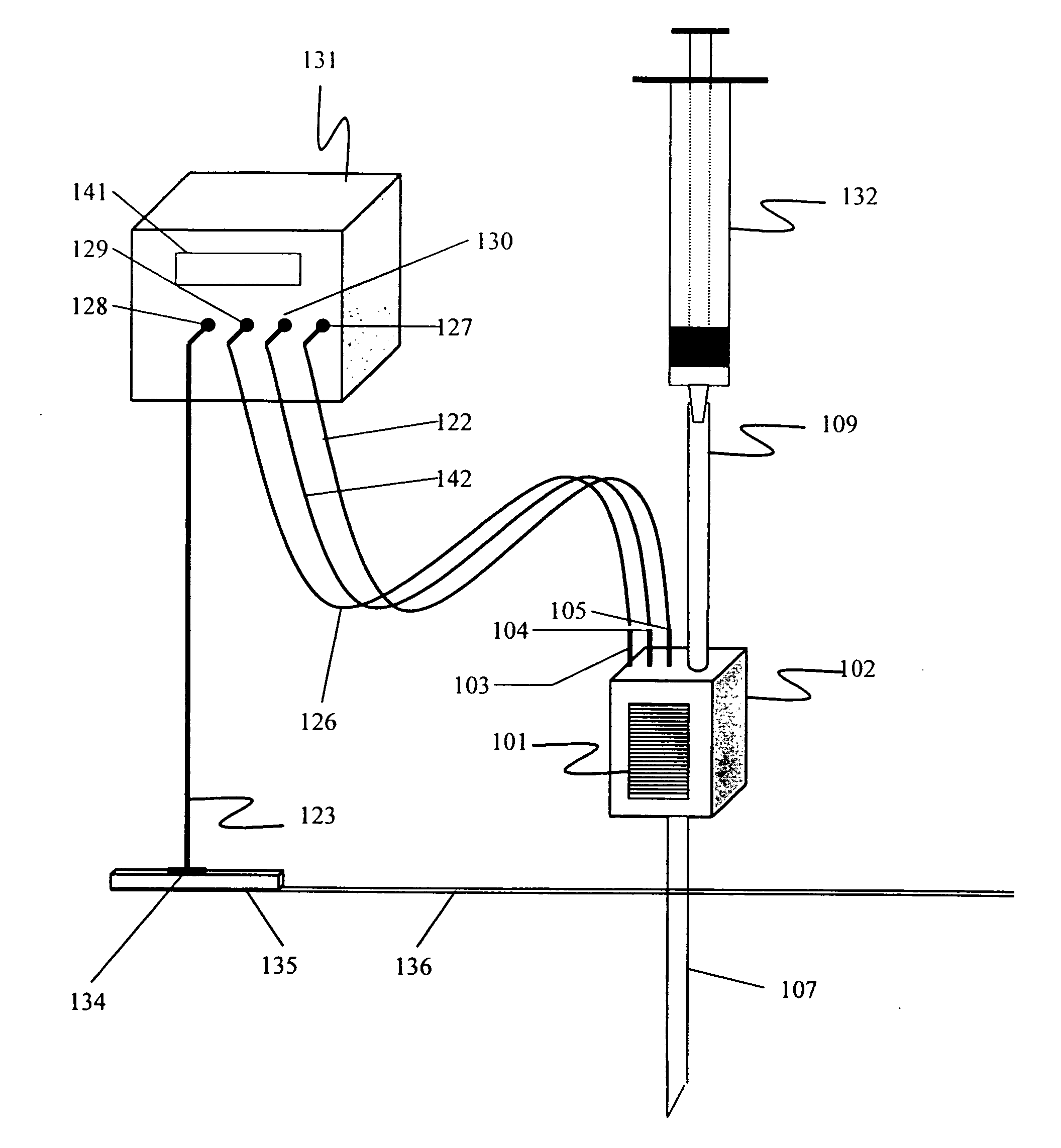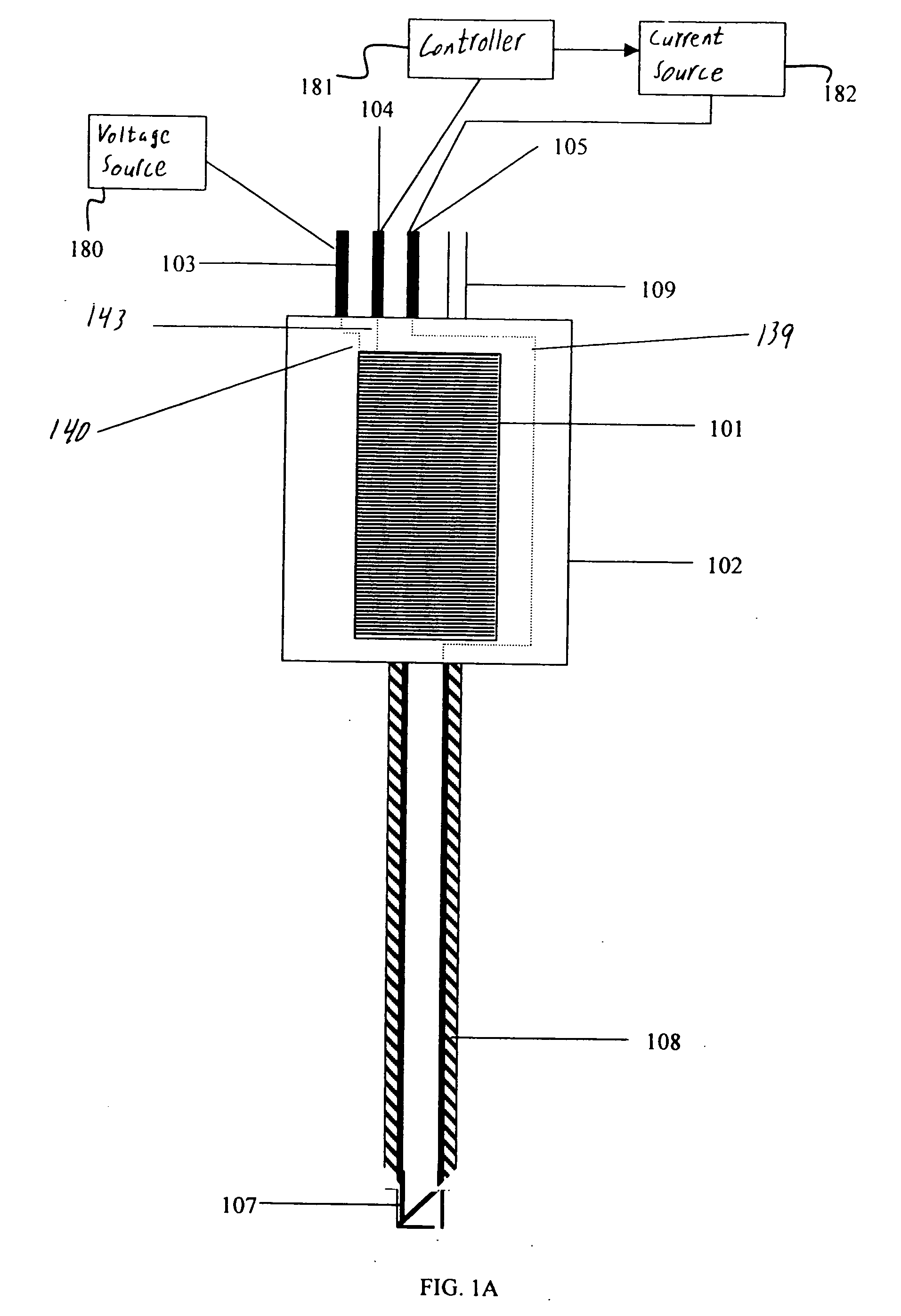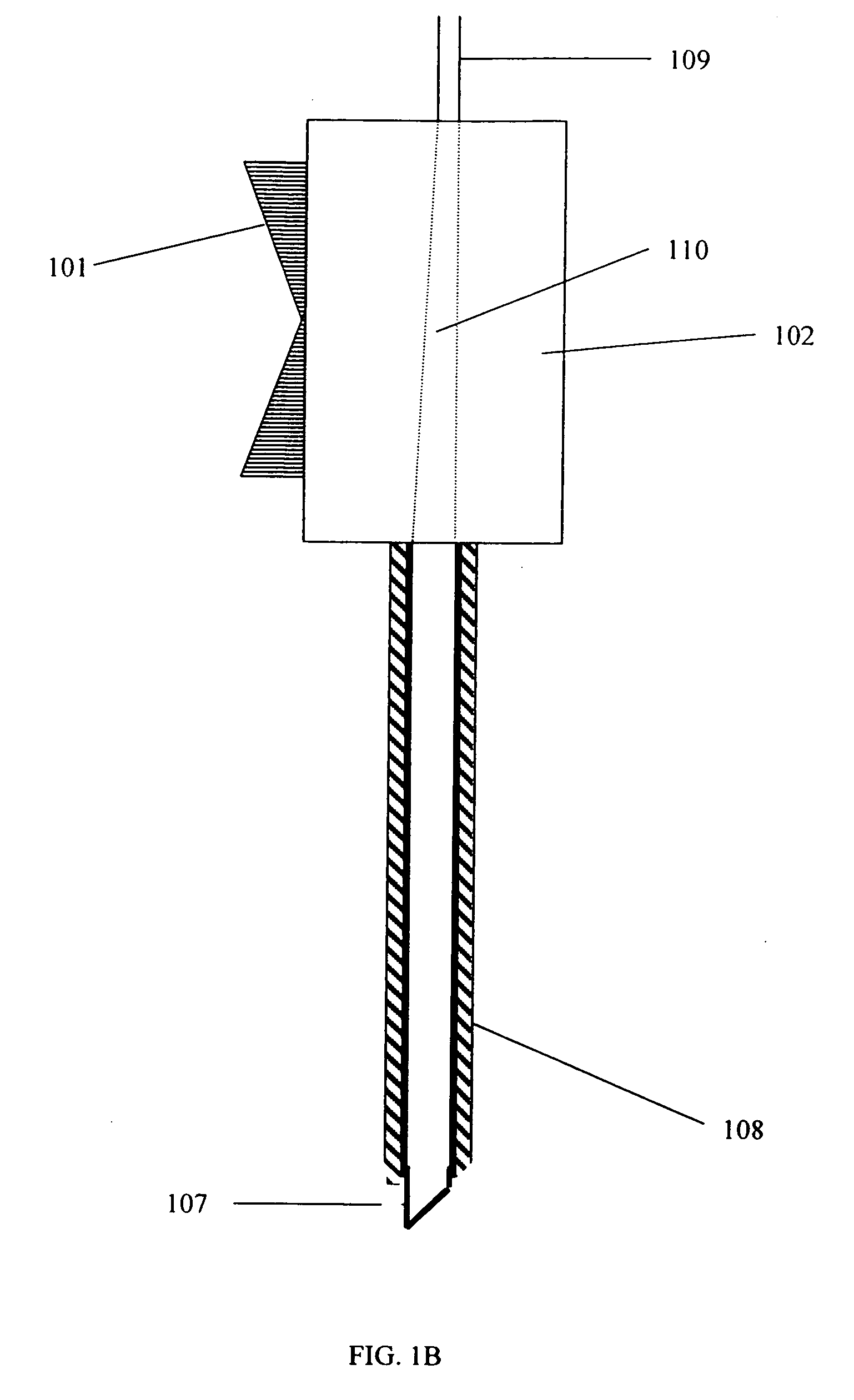Needle with depth determination capability and method of use
a technology of depth determination and needle, which is applied in the field of needle with depth determination capability and method of use, can solve the problems of difficulty in single operator needle placement and positioning in patient, difficulty in insertion and positioning of needle in patient, and difficulty in a single user to accomplish, so as to accurately position the needle and reduce the cost. the effect of the cos
- Summary
- Abstract
- Description
- Claims
- Application Information
AI Technical Summary
Benefits of technology
Problems solved by technology
Method used
Image
Examples
Embodiment Construction
[0041]Reference will now be made in detail to the present preferred embodiment of the invention, an example of which is illustrated in the accompanying drawings.
[0042]A preferred embodiment of the present invention comprises a nerve stimulator function that allows control of the current output through a fingertip control on the stimulating needle. A preferred embodiment of the needle assembly of the present invention is illustrated in FIG. 1A (front view) and FIG. 1B (side view). A needle assembly consists of a housing unit 102. The housing unit may be made of any suitable material such as molded plastic. The housing unit 102 preferably contains a plurality of electrical pin connectors 103, 104 and 105 that electrically connect the housing unit 102 to an external nerve stimulator device or a plurality of external devices. Electrical traces 139, 140, and 143 are preferably embedded within the housing unit 102 and are electrically connected to a corresponding electrical pin connector....
PUM
 Login to View More
Login to View More Abstract
Description
Claims
Application Information
 Login to View More
Login to View More - R&D Engineer
- R&D Manager
- IP Professional
- Industry Leading Data Capabilities
- Powerful AI technology
- Patent DNA Extraction
Browse by: Latest US Patents, China's latest patents, Technical Efficacy Thesaurus, Application Domain, Technology Topic, Popular Technical Reports.
© 2024 PatSnap. All rights reserved.Legal|Privacy policy|Modern Slavery Act Transparency Statement|Sitemap|About US| Contact US: help@patsnap.com










